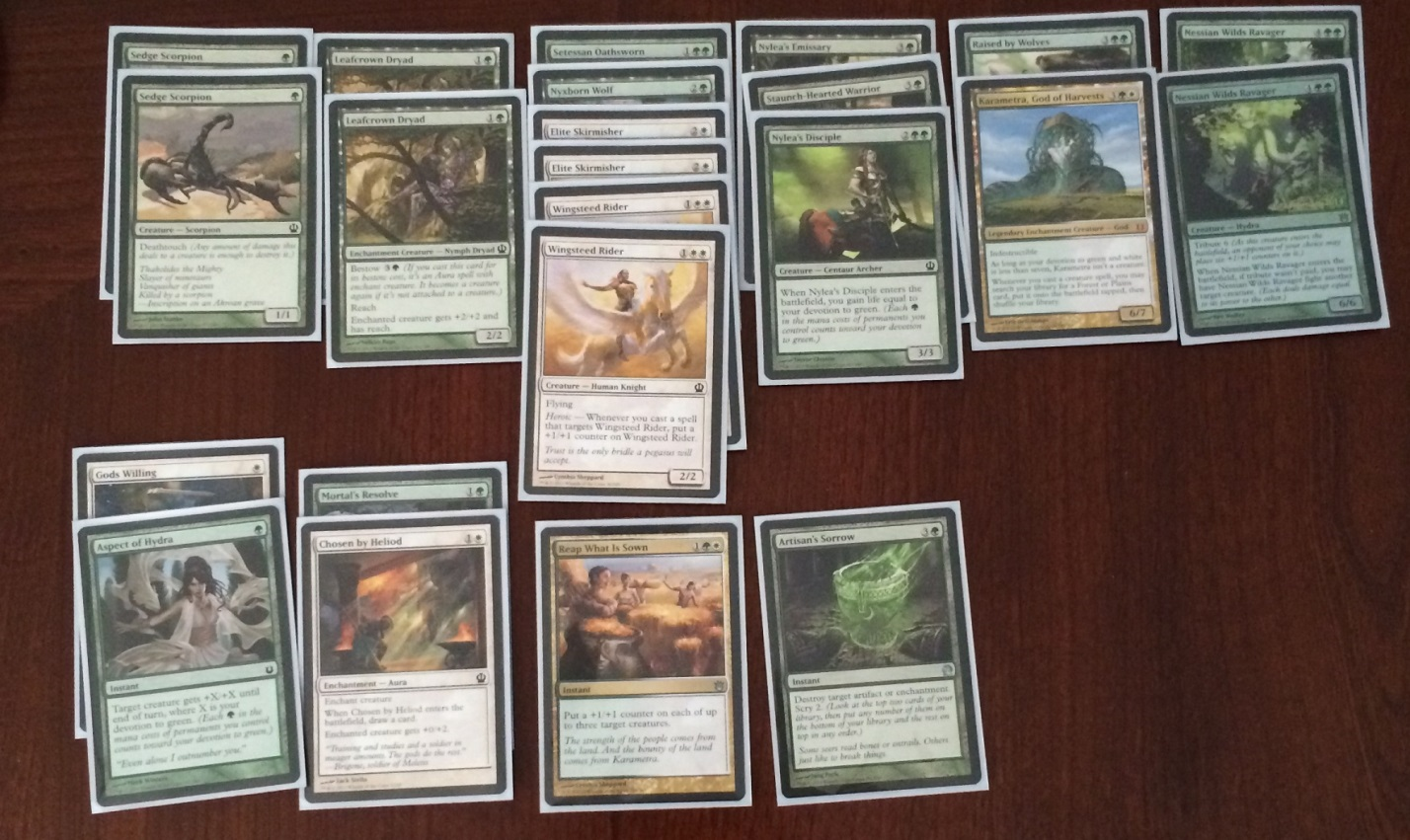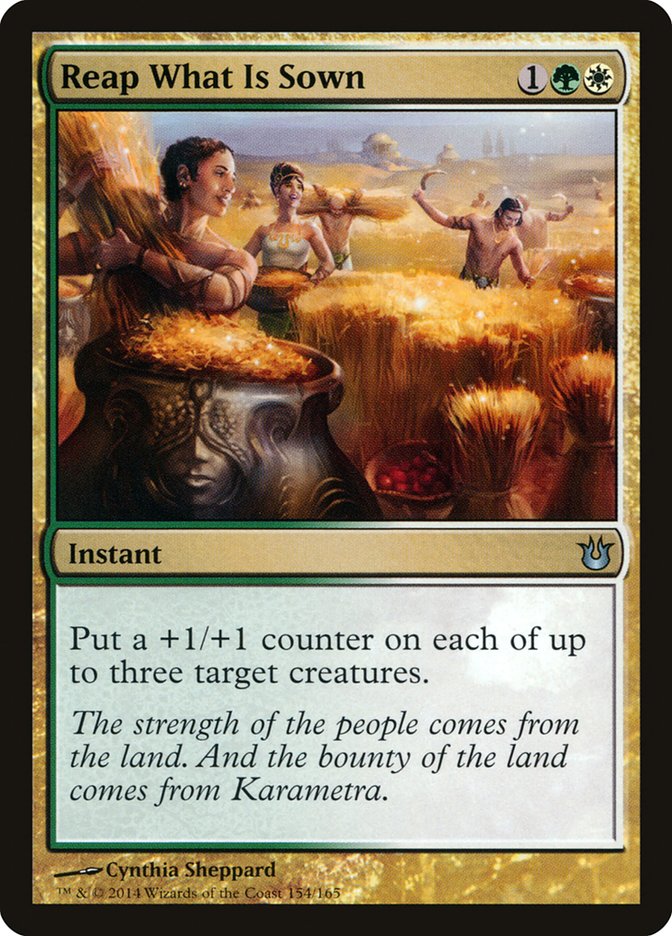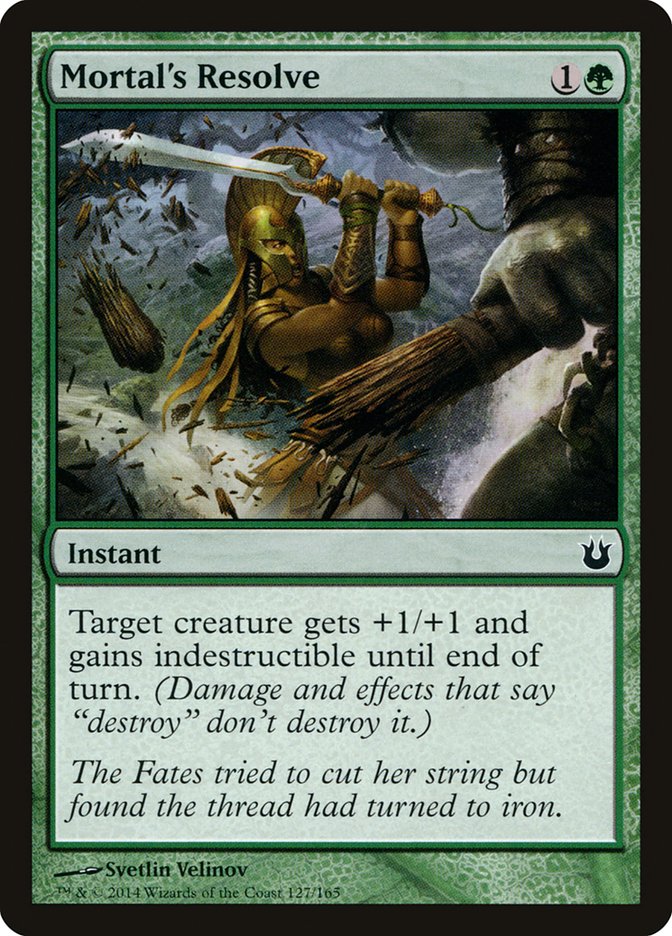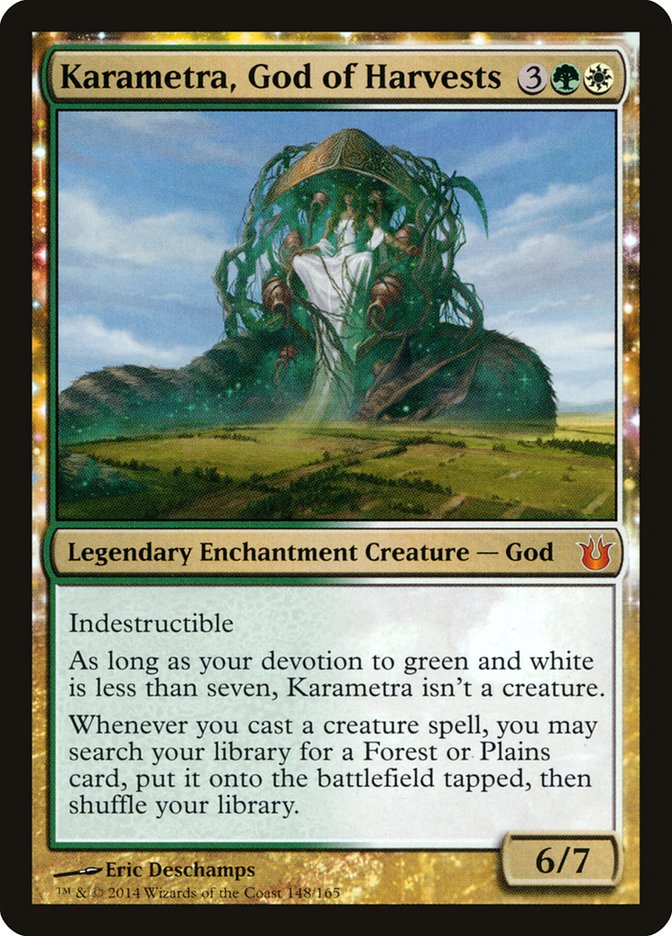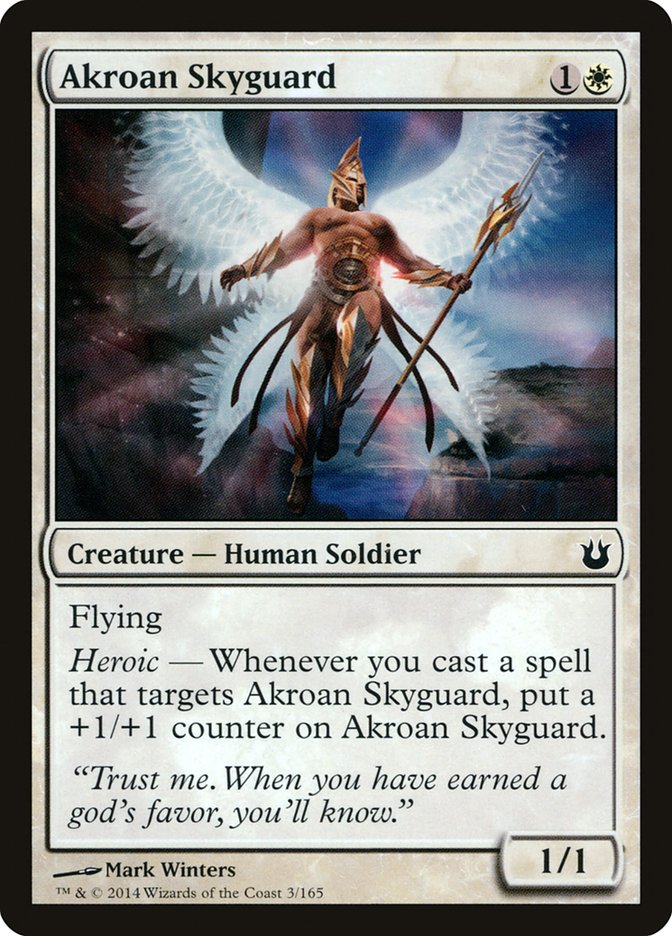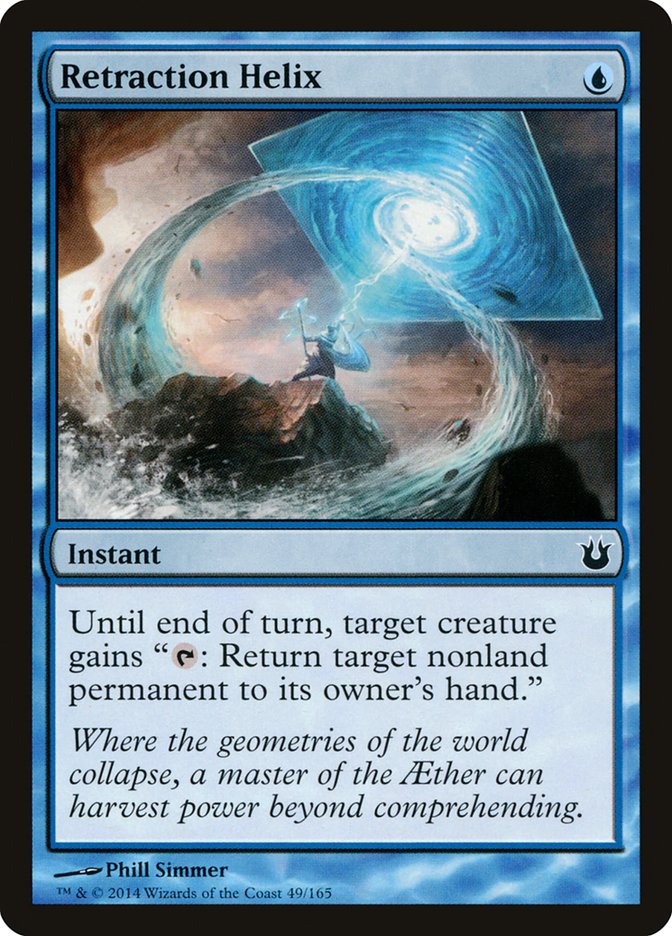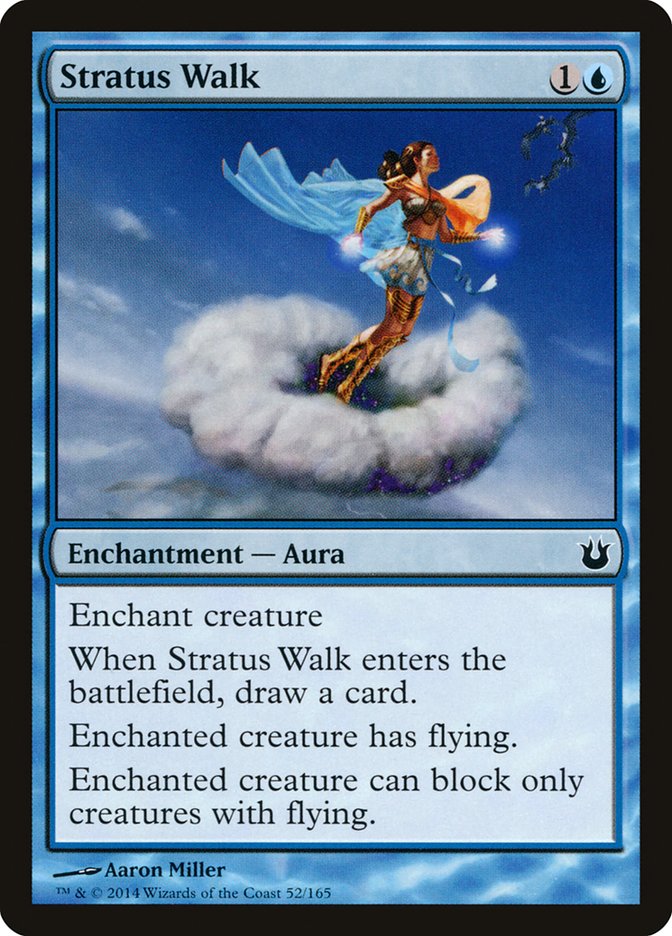Last weekend, like many of you, I played with Born of the Gods for the first time at my local Prerelease. While I’d read the spoiler, I had done so from the perspective of someone looking for Constructed-playable cards, which meant glossing over a lot of it. I hadn’t really looked over the set with Limited in mind before heading to the event, so I wasn’t entirely sure what to expect.
I had a number of people ask me on Twitter what color I was planning on playing at the Prerelease or what color I recommended they choose, but before that I didn’t even realize that choosing a color was a thing you could do. I was kind of out of the loop for what was going on with the set. That said, my answer was the same then as it would be now in retrospect: play whatever looks like it will be the most fun for you. Prereleases are meant to be about having fun and experiencing the new set for the first time, not maximizing your chances of coming away with a couple extra packs.
And it’s not just players who should keep this in mind. Since last weekend, I’ve heard a number of horror stories from players whose local stores ran Prereleases with huge added prize pools for the top finishers and ended up with a logistical nightmare on their hands. While I can appreciate a store wanting to differentiate their event and make it stand out from what other stores are offering, running a hypercompetitive event runs contrary to the spirit of Prereleases. Sure, you might draw some players who otherwise wouldn’t have come to your store, but you also run the risk of alienating more casual local players who just want a chance to play with the new cards.
The worst example of this I heard was a store that ran a Prerelease with a huge bonus prize pool for their midnight release. Because they didn’t have deck registration, they would not allow players to take their decks with them outside the play area and gave out match losses to players who broke this rule. On top of that, because they started their event so late, they played one fewer Swiss round than they should have before cutting to Top 8, meaning that some players with a single loss failed to make the cut. I have heard nothing but bad things about this event, which is hardly what a store is looking for when they decide to run a big event to draw more players. Now, I’m hearing all of this third hand so it’s possible the details aren’t quite accurate, but the general idea is still the same.
If you’re a storeowner, my advice to you is to save your big prize pool tournaments for another time. Prereleases are the worst possible kind of event in which to encourage cutthroat play and rules lawyering. You don’t want players who misunderstand the way new cards and mechanics work to get angle-shot by sharks. You also certainly don’t want to give unscrupulous players any extra incentive to cheat because Prereleases are one of the easiest places to get away with adding or trading cards since they generally don’t involve any kind of deck registration.
If you’re dead set on making your event stand out with extra prizes, go for it, but you should use those prizes differently. Give away door prizes or sportsmanship prizes or add bonus prizes to particular matches each round. The store that I played at for the Born of the Gods Prerelease—San Diego Games and Comics in Mira Mesa, California—had a bunch of really cool table-sized playmats with awesome art, and they selected a "showcase match" each round that had an extra prize on the line, including these playmats. People were really excited by the opportunity to play for them, but it didn’t appreciably change the tone of the event because there wasn’t some huge prize on the line for the overall winner.
The basic gist of all of this is to remember that Prereleases should be focused on having fun, whether you’re a player or a storeowner. Don’t ruin that by turning them into majorly competitive events.
Anyway, now that that’s off my chest, let’s talk about my experience at the Prerelease itself, shall we? As I said, I went to San Diego Games and Comics in Mira Mesa to play. I was there to spellsling for much of the day but played in the first Prerelease flight as well. To the surprise of absolutely no one, I chose to play green because green is awesome. This is the deck I ended up with.
Notable new sideboard cards included Mortal’s Ardor and two Snake of the Golden Groves, which I brought in against aggressive decks where I wanted life gain. Overall, my deck felt extremely good. I went 5-0 in my Prerelease flight and won the vast majority of the spellslinging games I played.
The MVP in my deck was absolutely Reap What Is Sown. The ability to pump three creatures is powerful by itself, but combined with heroic triggers it can be absolutely devastating. It came in particularly handy with Elite Skirmisher. Skirmisher overperformed my expectations by a significant margin, and a big part of that was the ability to trigger him off of Reap while still getting value on my Windsteed Rider or Setessan Oathsworn. Reap is also unusual in that it provides a permanent bonus to your creatures that can be played at instant speed, so you can do things like tap down your opponent’s creatures with Skirmisher before they can attack while still getting the full benefit of your pump spell.
As far as instant speed tricks go, both Aspect of Hydra and Mortal’s Resolve proved to be excellent. Aspect combined with Reap and Skirmisher to give me some blazingly fast kills, while Mortal’s Resolve was a great tool for protecting the heroic creatures I had invested in building. Resolve is not quite as powerful as Gods Willing since it costs twice as much, doesn’t scry, and can’t force damage through, but it’s still an excellent trick.
A great deal of the gameplay in Theros Limited was about building a big monster, and a tool that can help protect it (albeit not from Voyage’s End and Griptide) is certainly one to keep an eye on. Indestructability is a sufficiently powerful effect that Mortal’s Resolve might even be good enough to see fringe Constructed play to protect things like Stormbreath Dragon from Supreme Verdict.
Speaking of heroic enablers, Raised by Wolves was excellent. It can provide both a reasonable boost to a single creature (though I never had both it and Nyxborn Wolf in play for the extra +1/+1) and a reasonable amount of value even if that creature is killed. It is worth noting that it is a five-mana creature enchantment, however, and there are a lot of cards your opponent could have at that point in the curve that could remove the targeted creature from the battlefield in response. The nature of bestow means that there aren’t many opportunities to get blown out when you’re pumping a creature in this format, but Raised by Wolves introduces exactly that. I would not recommend casting it into a lot of open mana.
My pair of Nessian Wilds Ravagers—one Prerelease foil, one pulled from a regular pack—certainly came up big (quite literally in fact). My opponents chose to pay tribute far more often than not, which meant that I ended up with a lot of 12/12 creatures over the course of the day. Those huge bodies were a lot more effective than I had thought they might be thanks to my supporting cast. Elite Skirmisher and Gods Willing were able to force through Ravagers for huge chunks of damage despite opposing chump blockers. I don’t think Ravager will be a true bomb, especially in the faster reality of a Draft format, but even just as a big dumb creature it exceeded my expectations.
The worst card in my deck by far was Karametra, God of Harvests. I generally have not been a big fan of the Gods in Limited, but because it was the Prerelease, I wanted to play the card for fun as well as give it a chance to prove me wrong because you don’t get many opportunities to try out rarer cards.
This is a policy I highly recommend in the early stages of any Limited format by the way. If any decision in the early weeks of a new Limited format seems even remotely close, err on the side of the rarer card. You’ll get a lot of chances to play with commons and uncommons but far fewer shots at rares and especially mythics. It’s far better to learn which are strong and which are weak at something like a Prerelease or at your local FNM draft than when you’re drafting in a PTQ Top 8 or on the second day of a Grand Prix.
Anyway, when it comes to Karametra, I can save you the trouble of finding out. She stinks. Sure, she’s a 6/7 indestructible creature when she’s turned on, but she requires five colored symbols beyond herself to make that happen so you’re probably already in reasonable shape once you get to that point. I’d generally rather play a card that has the potential to be good when I’m behind or that can help me get ahead rather than one that cements an already strong position.
The big strike against Karametra compared to some of the other Gods is how weak her passive ability is. Once you have the five mana required to play her, you’re reaching the point where lands have seriously diminishing utility. Sure, a trigger or two could help reach the monstrous threshold for something like a Nessian Asp, but that’s really not worth paying a card for, especially since it’s conditional on having more action spells once you’ve cast her to actually get the value out of it.
In all but maybe one game the entire day, I would have been better off with my five-drop as Setessan Griffin or something equally mediocre—she was just that bad.
As far as new cards that made an impression on me that weren’t in my own deck:
Natalie had multiple copies of Akroan Skyguard in her deck, and it was pretty much the mini Wingsteed Rider you might expect—not quite as easy to make unstoppable, but a tool that you can easily get online quite quickly. Skyguard was one of the reasons that I was more impressed than I had thought I would be by some of the vanilla bestow guys, most notably Nyxborn Shieldmate, who could get the Skyguard suited up and attacking for three as early as the third turn. Shieldmate was also a great pairing with Oreskos Sun Guide, which was also quite powerful in any kind of aggressive matchup because it’s very difficult to race.
Other standout commons were Retraction Helix—very much like an Unsummon that can actually trigger heroic—and Stratus Walk. Stratus Walk was great as a cheap way to give any creature evasion that happens to work very well alongside inspired creatures like the aforementioned Sun Guide. The pair of Bolt of Keranos and Fall of the Hammer makes red much more attractive than in Theros alone, with the latter working particularly well alongside green thanks to its big creatures and especially Sedge Scorpion.
All told, I had a lot of fun playing with the new set. I think the inspired and tribute mechanics offer a lot of interesting tradeoffs that stand to reward strong players, and I’m looking forward to seeing how it shakes up the Theros Limited format.
How was your Prerelease? What cards were better than you expected and which underperformed?

